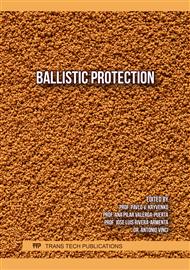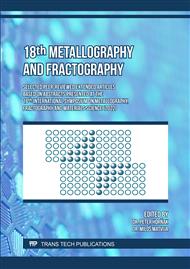p.1
p.17
p.23
p.31
p.43
p.59
p.73
p.91
p.97
Preparation and Fracture Analysis of Advanced Layered Composite with Graphene-Coated Alumina Nanofibers
Abstract:
The present work aims at the preparation and characterization of ceramic layered composite prepared from fine submicron-sized Al2O3 with the addition of electrospun graphene-coated Al2O3 fibers (Al2O3/G-Fs) by Spark Plasma Sintering with double pressure sintering process. A layered composite containing 2.5 wt. % of Al2O3/G fibers in three homogeneous layers was prepared and compared with the pure monolithic Al2O3 material obtained under the same conditions. The microstructures of the samples were studied by optical microscopy, scanning, and transmission electron microscopy. The presence of graphene after the sintering in the final composite was proved by Raman spectroscopy. The effect of the graphene-coated fibers on the composite`s microstructure and mechanical properties was described along with the fractographic analysis. Graphene on the surface of the electrospun Al2O3 fibers suppressed the grain growth which dominantly takes place during the sintering of the composite, which significantly influenced the character of the fracture. While predominantly intergranular fracture occurs in the monolithic fracture surface, the fracture character becomes transgranular with the addition of layers of Al2O3/G-Fs. Fracture toughness improvement took place because of the presence of small pores, in order of a few nanometers, which showed high energy absorption and provided self-induced crack propagation inhibition.
Info:
Periodical:
Pages:
17-22
Citation:
Online since:
April 2023
Keywords:
Price:
Сopyright:
© 2023 Trans Tech Publications Ltd. All Rights Reserved
Share:
Citation:




